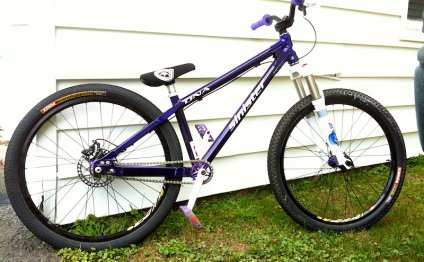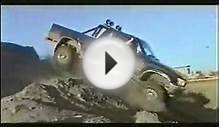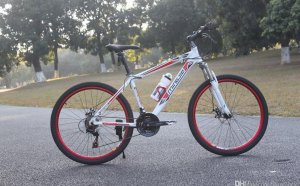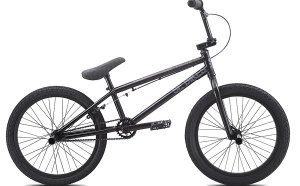
Mountain BMX Bikes
BMX bicycles typically end up in three categories: race bikes, flatland/street bikes and dust jumpers.
Typical across all three BMX categories is a smaller wheel size. 20" wheels will be the common, however you will periodically see battle and leap bicycles with 24" rims. There are also 26" race bikes however you rarely see all of them today.
BMX bikes also routinely have just one gear. Again, equipment ratios differ by group, with competition bikes having the tallest/highest gearing with easier gearing for soil jumpers and street bicycles.
While BMX bikes are typically considered and marketed as kids bikes, adults do ride and competition BMX and you will get structures to match all sizes of bikers.
BMX frames are generally 'low slung' and a lot of bikers cannot take a seat on the chair and ride. Structures can be made out of steel, aluminum or carbon fiber. In racing, aluminum is most frequent while cromoly metal is much more common into the other categories.
BMX bikes routinely have one rim brake caliper into the back which will be managed by a hand lever. Street/trick bicycles could also have front gears.
Hill bicycles, like BMX bikes, additionally had a tendency to get sorted into three categories, however for various uses: x-country, enduro and downhill.
Tires for mountain biking are typically in three sizes: 26", 27.5" (or 650b) and 29". Mountain bikes had been initially adapted from Schwinn paperboy bikes, hence the interest in the 26" wheel dimensions. That said, all wheel sizes have their utilizes, though most hill bicycles offered now are generally loaded with 27.5" or 29" tires. Those sizes have become ever more popular due to the fact that they roll-over obstacles easier.
Hill bikes, versus BMX bicycles, have numerous gears. For years, a 3x8 setup (3 gears in the front and 8 in the straight back) ended up being common, but with technical improvements, there is certainly now a bevy of gearing choices with bicycles now-being sold with 1x11 or 2x10 combinations. Due to larger range derailluers (the bike components that move the string from gear to gear), a configuration like a 1x11 can typically supply the same 'gear ins'/mechanical advantage that a vintage 3x8 system would offer as there are no 'wasted' gears made ineffective by chain crossover.
Mountain bikes were originally loaded with cantilever-style rim brakes, but those had been later on supplanted because of the much easier and much better 'V' brake system before disc brakes arrived.
Most high-end mountain bicycles today come built with disc brake system. MTB disc brakes could be either technical (cable actuated) or hydraulic (like automotive brakes). Disc brakes provide several benefits towards rider. They don't lose stopping capability in damp circumstances, and, they offer more modulation (or braking range) than rim brakes. Nevertheless, these are typically some harder to set up, especially the hydraulic designs.
Mountain bicycles might have no suspension, front suspension system only (called a hardtail) or complete suspension system. Also entry level bicycles today typically come equipped with a suspension fork right in front, however some cyclists prefer a totally rigid bike.
Suspension travel differs by kind of cycle, with cross country bicycles having the minimum suspension (2.5" to 4" of travel) to downhill bikes having 8 ins of travel in the front and back.
X-country bikes fare best in rolling to hilly circumstances. You will not want to pilot a x-country bicycle down a specialized downhill course, though you are able.
Enduro bikes are typically built to rise and descend really so they typically have more suspension than a cross country cycle (six ins seems to be the most frequent). The bicycles in many cases are loaded with suspension system which can be locked off to minmise bobbing or jumping while climbing.
Downhill bicycles are highly specialized. It is very uncommon to see downhill mountain bicycle specialists operating their particular bicycles up a hill. That said, the bikes can manage virtually any obstacle that comes there means on a downhill training course. Jumping 50 base spaces, losing several feet, selecting their particular way through rocks which can be seemingly impassible are in one day's benefit downhill bikes.
YOU MIGHT ALSO LIKE



Share this Post
Related posts
Mountain BMX Bikes for Sale
Service Management Name: Benjamin Mondragon Where did you grow up?: Modesto CA Summit Team associate since (year): 2013 Exactly…
Read MoreSE Wildman BMX Bikes
The trick to purchasing an entry-level Dirt/Street/Park bike for a smaller sized driver (4 4 -5 ) is finding one that has…
Read More











